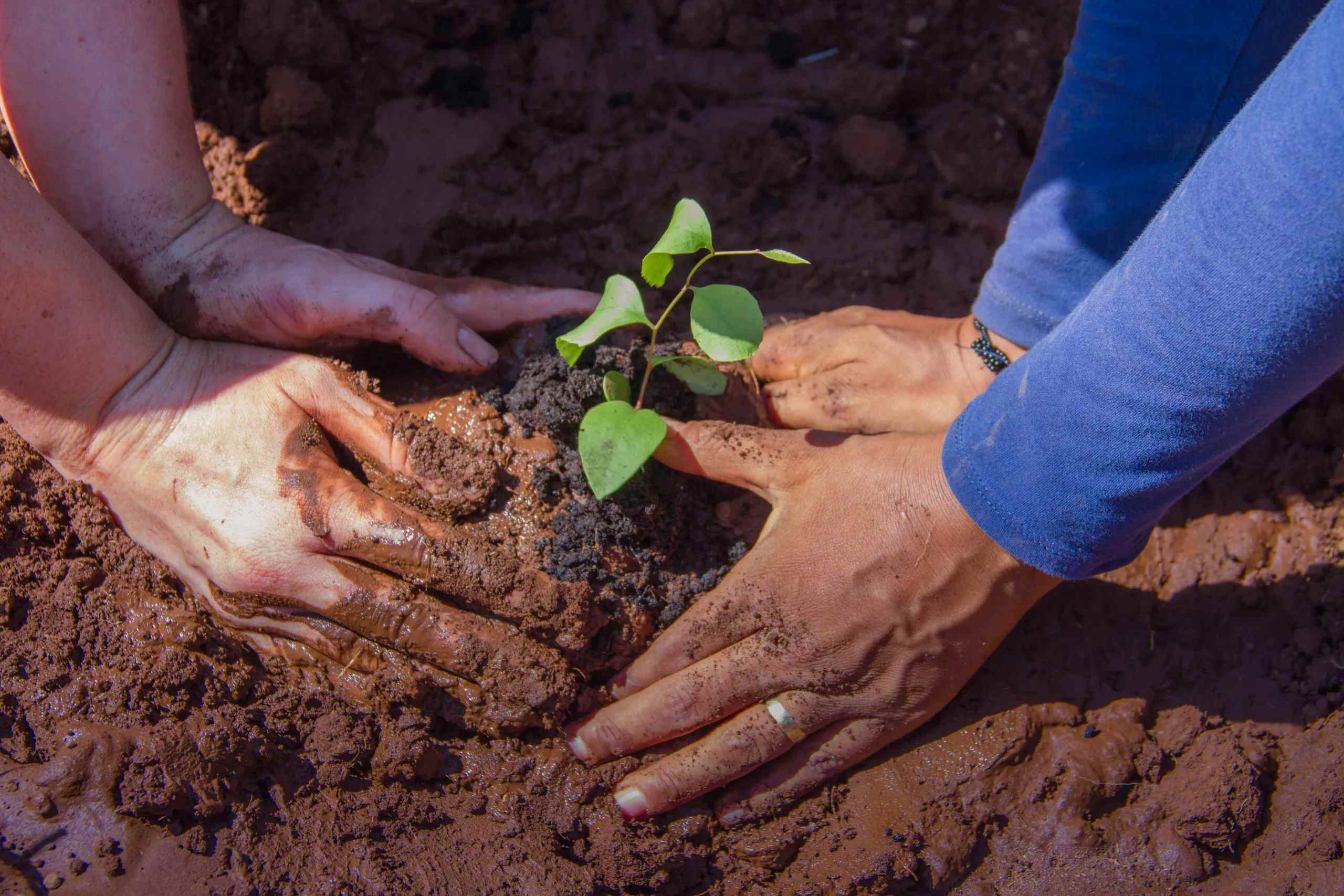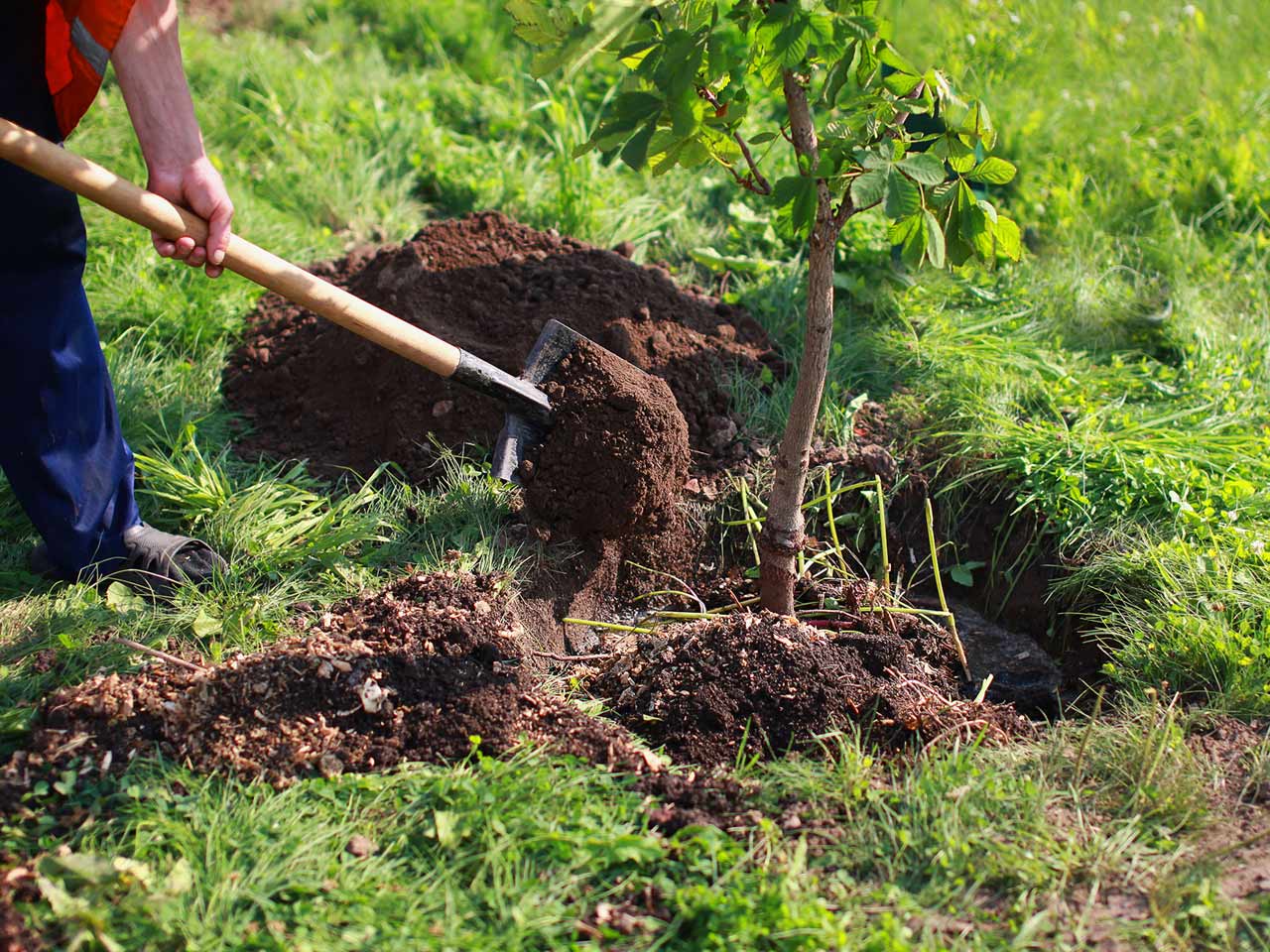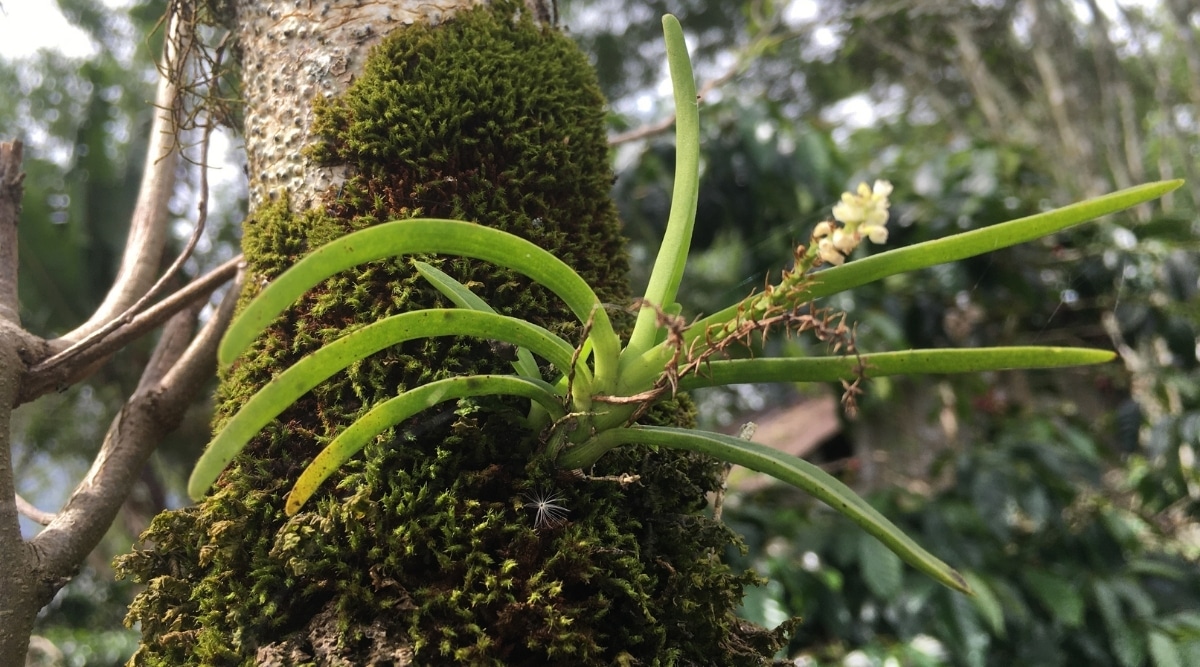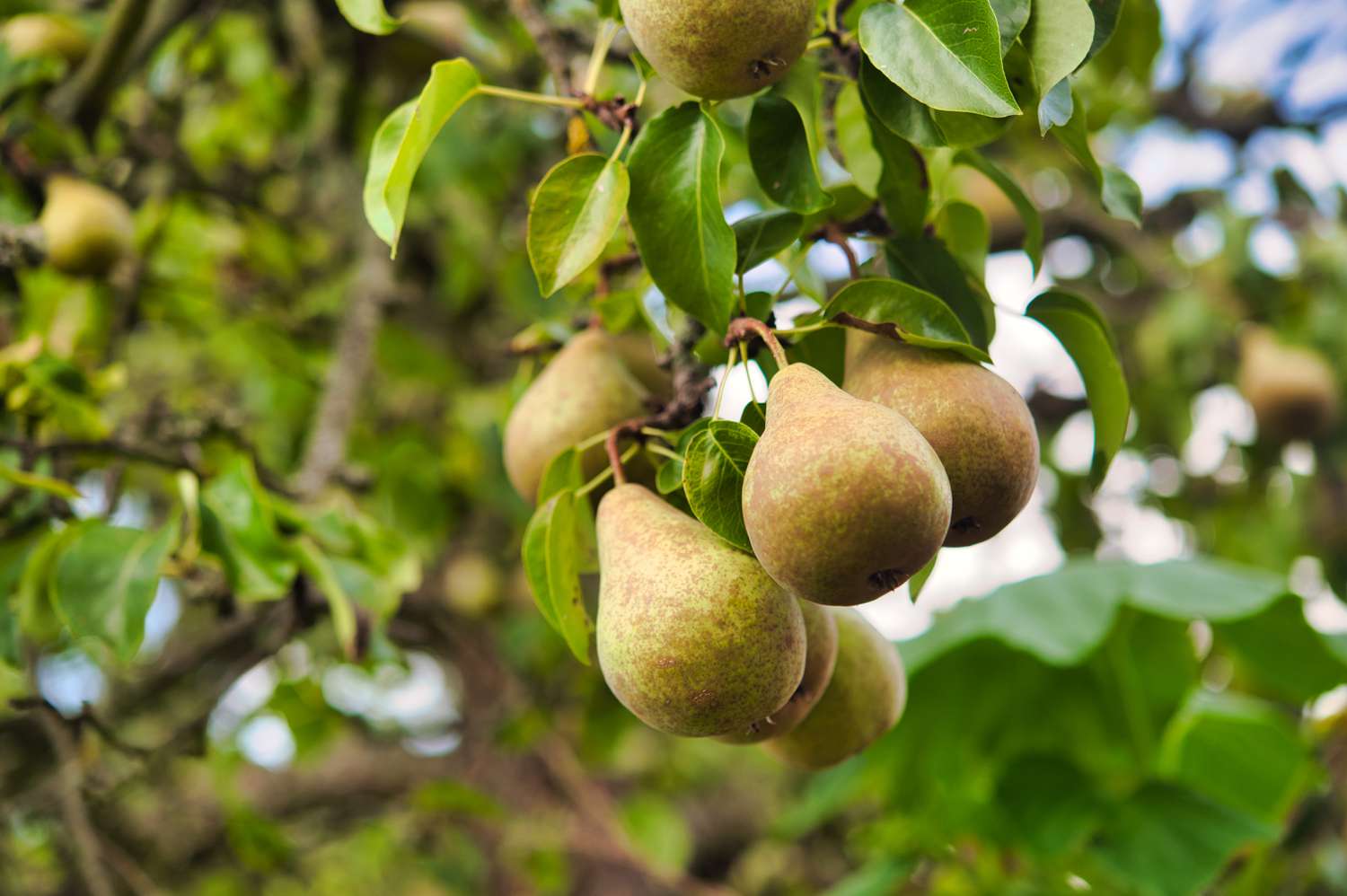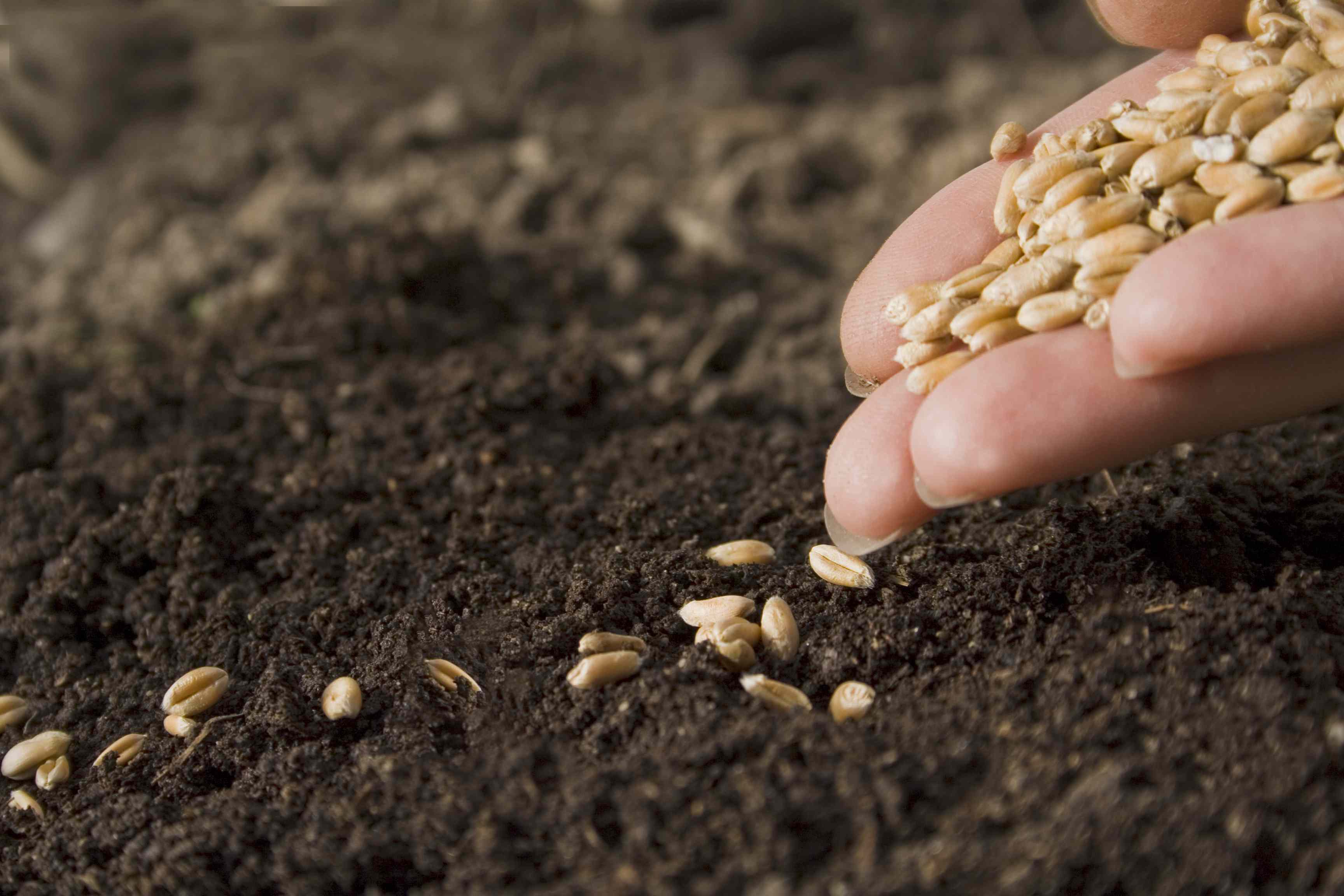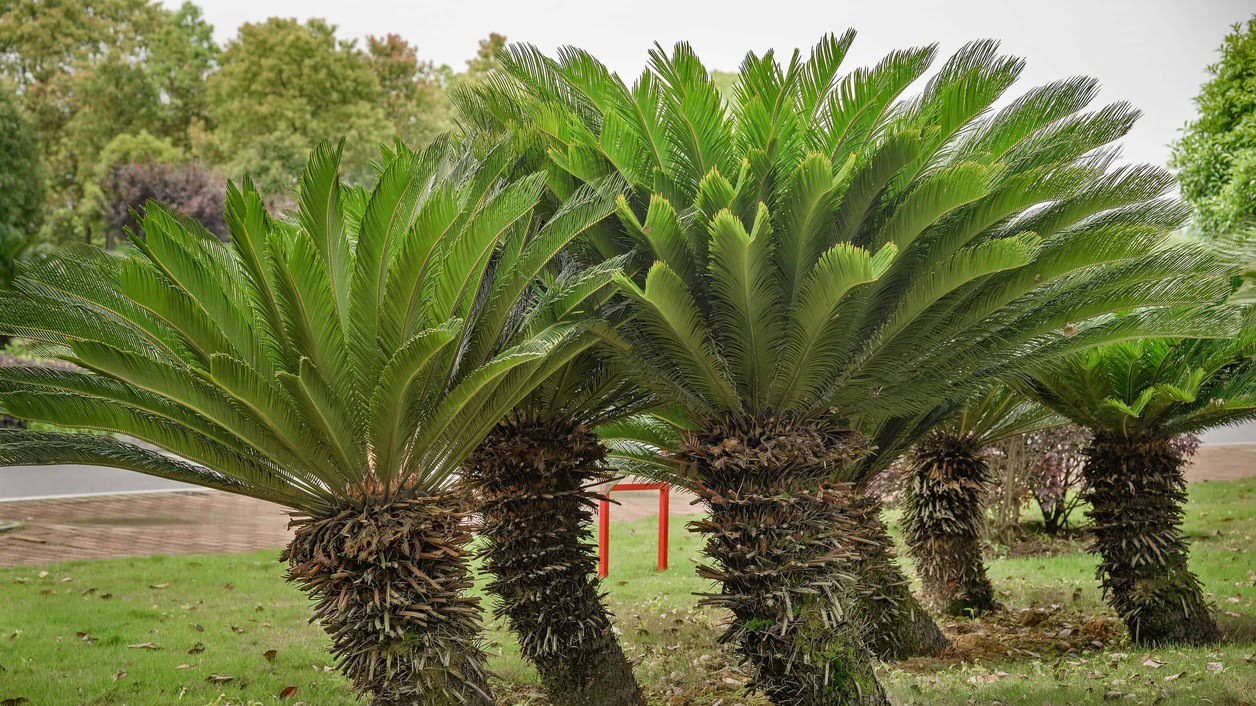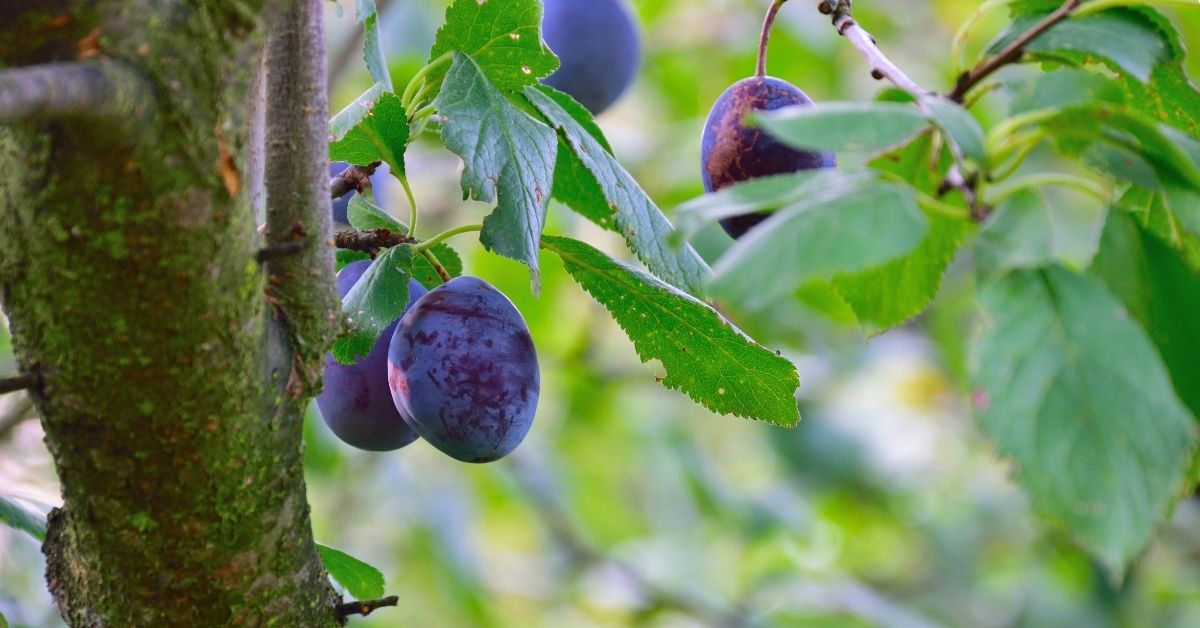Home>Gardening Techniques>Plant Care>How To Plant Citrus Trees


Plant Care
How To Plant Citrus Trees
Modified: February 10, 2024
Discover the secrets of successful citrus tree planting with our comprehensive guide. Learn the essentials of plant care and ensure healthy growth for your citrus trees.
(Many of the links in this article redirect to a specific reviewed product. Your purchase of these products through affiliate links helps to generate commission for Chicagolandgardening.com, at no extra cost. Learn more)
Table of Contents
- Introduction
- Step 1: Selecting the Right Citrus Tree
- Step 2: Choosing the Right Location
- Step 3: Preparing the Soil
- Step 4: Digging the Hole
- Step 5: Planting the Citrus Tree
- Step 6: Watering and Mulching
- Step 7: Providing Proper Care and Maintenance
- Step 8: Pruning and Shaping the Tree
- Step 9: Harvesting Citrus Fruits
- Conclusion
Introduction
Welcome to our comprehensive guide on how to plant and care for citrus trees. Whether you are new to gardening or an experienced plant enthusiast, growing your own citrus trees can be a rewarding and enjoyable experience. Not only do citrus trees provide a beautiful addition to your garden or landscape, but they also offer the opportunity to enjoy the delicious and nutritious fruits they produce.
Citrus trees, including varieties such as oranges, lemons, limes, and grapefruits, are known for their vibrant colors, fragrant blossoms, and of course, their juicy and flavorful fruits. By following the proper planting and care techniques, you can create an ideal environment for your citrus tree to thrive and yield bountiful crops year after year.
In this guide, we will take you through each step of the planting process, from selecting the right citrus tree to harvesting its fruits. We will also provide tips and advice on how to provide the proper care and maintenance to ensure the health and vitality of your citrus tree.
Whether you have a small backyard, a spacious garden, or even just a sunny patio or balcony, growing a citrus tree is possible in a variety of spaces. With a little bit of planning and attention, you can enjoy the beauty and taste of your very own homegrown citrus fruits.
So let’s dive in and discover the secrets to successful citrus tree planting and care. Get ready to enjoy the sight, scent, and taste of fresh citrus right from your own backyard!
Step 1: Selecting the Right Citrus Tree
The first and most crucial step in planting a citrus tree is selecting the right variety for your specific climate and growing conditions. Different citrus tree varieties have specific requirements regarding temperature, sunlight, and soil conditions. Here are some factors to consider when choosing a citrus tree:
- Climate: Citrus trees thrive in warm and sunny climates. Consider the average temperature range and frost-free days in your region. Some citrus varieties are more cold-tolerant, while others require a more tropical climate.
- Availability: Visit local nurseries or consult with reputable online sources to determine the citrus tree varieties that are readily available in your area. Choosing locally adapted varieties can increase your chances of success.
- Size: Consider the mature size of the citrus tree and ensure that it will fit well within your available space. Dwarf varieties are a great option for small gardens or container planting.
- Fruit Flavor: Citrus fruits come in a variety of flavors, from sweet to tangy. Consider your personal preference and the intended use of the fruits (eating fresh, juicing, cooking, etc.) when selecting a citrus variety.
- Rootstock: Citrus trees are often grafted onto a specific rootstock, which can affect their growth and adaptability. Research the different rootstocks available and choose one that is suitable for your soil conditions and desired tree size.
Once you have considered these factors, you can make an informed decision about the variety of citrus tree that is best suited to your needs. It’s also a good idea to consult with local gardening experts or extension services for additional guidance on selecting the right citrus tree for your specific location.
Step 2: Choosing the Right Location
The location where you plant your citrus tree plays a crucial role in its overall health and productivity. Here are some important factors to consider when choosing the right location:
- Sunlight: Citrus trees love sunlight and thrive in full sun exposure. Make sure to select a location that receives at least 6-8 hours of direct sunlight each day. Avoid areas that are shaded by buildings, trees, or other structures.
- Protection from Wind: While citrus trees require sunlight, they can be sensitive to strong winds. Plant your citrus tree in a location that offers some protection from strong gusts. Consider using windbreaks such as fences or hedges to shield the tree if necessary.
- Soil Drainage: Citrus trees prefer well-draining soil to prevent waterlogged roots. Avoid planting in areas with heavy clay or compacted soil. If your soil doesn’t drain well, consider amending it with organic matter or creating raised beds to improve drainage.
- Proximity to Structures: Keep in mind the mature size of the citrus tree and its proximity to buildings, sidewalks, and other structures. Ensure that the tree has enough space to grow without being overcrowded or interfering with structures.
- Accessibility to Water: Choose a location that is easily accessible to a water source. Citrus trees require regular watering, especially during dry periods. Having easy access to water will make watering and maintenance tasks more convenient.
- Avoid Frost Pockets: Cold temperatures can be detrimental to citrus trees, especially when they are young or during the blooming period. Avoid planting in low-lying areas or frost pockets where cold air can settle. If you live in a colder region, consider using protective measures such as covers or frost blankets during freezing temperatures.
By carefully selecting the right location for your citrus tree, you can provide it with the optimal growing conditions for healthy growth and abundant fruit production. Additionally, consider the aesthetics of the location, as a well-placed citrus tree can enhance the beauty of your garden or landscape.
Step 3: Preparing the Soil
Preparing the soil properly is essential for giving your citrus tree a strong foundation for growth and development. The following steps will help you prepare the soil for planting:
- Test the Soil: Start by testing the soil to determine its pH level and nutrient content. Citrus trees prefer a slightly acidic soil with a pH range of 6 to 7. If the soil pH is too high or too low, you can adjust it by adding amendments such as sulfur or lime accordingly.
- Remove Weeds and Debris: Clear the planting area of any weeds, grass, or debris. This will prevent competition for nutrients and reduce the risk of pests or diseases.
- Improve Drainage: If your soil has poor drainage, you can improve it by adding organic matter such as compost, well-rotted manure, or peat moss. These amendments help enhance soil structure and promote better water infiltration and drainage.
- Amend with Nutrients: Citrus trees have specific nutrient requirements for healthy growth and fruit production. Before planting, incorporate a balanced citrus fertilizer into the soil, following the package instructions. This will provide essential nutrients like nitrogen, phosphorus, and potassium.
- Loosen the Soil: Use a garden fork or a tiller to loosen the soil in the planting area. This helps break up compacted soil, allowing roots to penetrate easily and establish themselves more effectively.
- Work the Amendments: Mix the organic matter and fertilizer evenly into the soil, ensuring it is well-incorporated. This will help distribute nutrients throughout the planting area and promote healthy root development.
- Level the Soil: Smooth out the soil surface, removing any large clumps or rocks. A level planting area provides a stable base for the tree and makes it easier to apply mulch later on.
By properly preparing the soil, you create an optimal environment for your citrus tree to thrive. The nutrient-rich and well-drained soil will support healthy root growth and contribute to the overall success of your citrus tree.
Step 4: Digging the Hole
Digging the right hole is crucial for providing sufficient space and support for the roots of your citrus tree. Follow these steps to ensure the proper depth and width of the planting hole:
- Measure the Tree’s Rootball: Determine the width and depth of the planting hole based on the size of the tree’s rootball. The width of the hole should be 2-3 times wider than the rootball, while the depth should be equal to the height of the rootball.
- Mark the Planting Site: Use a shovel or garden tools to mark the outline of the planting hole. This will serve as a guide while you dig the hole.
- Start Digging: Begin digging the hole using a shovel or a spade. Start at the marked outline and work your way towards the center, removing soil as you go.
- Maintain the Proper Depth: As you dig, check the depth of the hole periodically to ensure it matches the height of the rootball. Adjust the depth as needed, making sure not to dig too shallow or too deep.
- Create a Slightly Mounded Bottom: To encourage good drainage, create a slightly mounded or cone-shaped bottom in the hole. This will prevent the tree from sitting in a pool of water after watering.
- Loosen the Soil: Use a garden fork or a hand trowel to loosen the soil on the sides of the hole. This will help promote better root penetration and establishment.
- Remove Excess Soil: If the hole is deeper than necessary, remove some soil from the bottom until it matches the height of the rootball. Place the excess soil aside for later backfilling.
By digging the hole to the appropriate size and depth, you provide enough room for the roots to spread out and establish themselves. This promotes stronger root development and better nutrient and water uptake, essential for the overall health and growth of your citrus tree.
Step 5: Planting the Citrus Tree
Now that you have prepared the soil and dug the proper hole, it’s time to plant your citrus tree. Paying attention to the planting process will ensure that your tree gets off to a strong start. Follow these steps for successful planting:
- Position the Tree: Carefully place the citrus tree into the planting hole, ensuring that the top of the rootball is level with or slightly above the surrounding soil. Avoid planting it too deep, as this can lead to suffocation of the roots.
- Backfill the Hole: Gradually fill the hole with the soil that was set aside earlier. Lightly pack the soil as you go to eliminate air pockets and provide stability to the tree. Avoid compacting the soil too tightly, as this can restrict root growth.
- Water Thoroughly: After backfilling, give the newly planted tree a thorough watering. This will help settle the soil around the roots and provide essential moisture. Ensure that the water reaches the entire rootball and surrounding soil.
- Create a Watering Basin: Form a small ring or basin around the base of the tree using the excess soil. This will help direct water towards the roots and prevent runoff. The basin should be wide enough to hold a sufficient amount of water during watering sessions.
- Apply Mulch: Spread a layer of organic mulch around the base of the tree, leaving space around the trunk to prevent moisture buildup. Mulch helps retain moisture, suppresses weeds, and regulates soil temperature.
- Stake the Tree (if necessary): If your citrus tree is top-heavy or prone to leaning, consider staking it for support. Use soft ties or flexible materials to secure the tree to the stake, allowing some movement for natural growth.
- Monitor and Adjust: Regularly check the soil moisture level and make adjustments to watering as needed. Ensure that the tree receives adequate irrigation during the growing season, especially during dry periods.
By following these planting steps, you give your citrus tree a solid foundation for growth. Proper planting helps establish good root-to-soil contact, facilitates water absorption, and sets the stage for healthy establishment and overall development.
Step 6: Watering and Mulching
Proper watering and mulching are essential for the health and vitality of your citrus tree. These practices help maintain soil moisture, regulate temperature, suppress weeds, and promote overall growth. Follow these guidelines for effective watering and mulching:
- Watering Frequency: Citrus trees require regular watering, especially during the first few years of establishment. Water deeply, but infrequently, to encourage deep root growth. A general rule of thumb is to provide 1-1.5 inches of water per week, depending on weather conditions.
- Watering Technique: Water at the base of the tree, directly onto the soil, rather than on the foliage. This helps ensure that water reaches the roots where it is needed the most. Avoid overhead sprinklers, as they can promote fungal diseases.
- Monitor Soil Moisture: Check the soil moisture level regularly by inserting a finger or a moisture meter a few inches into the soil. Water when the top few inches of soil feel dry, but avoid overwatering, as it can lead to root rot. Adjust your watering schedule based on weather conditions and the specific needs of your citrus tree.
- Mulching Benefits: Apply a layer of organic mulch around the base of your citrus tree, keeping it a few inches away from the trunk. Mulch helps retain soil moisture, suppresses weed growth, and regulates soil temperature. It also improves soil structure as it breaks down over time, providing essential nutrients.
- Mulch Depth: Apply mulch to a depth of 2-4 inches, ensuring that it covers the entire root zone of the tree. Avoid piling mulch directly against the trunk, as this can lead to moisture buildup and potential rot issues.
- Mulching Technique: Spread the mulch evenly, creating a donut-shaped ring around the base of the tree. Leave a few inches of space near the trunk to prevent contact with the mulch, reducing the risk of pests and diseases.
- Renew Mulch Regularly: Over time, the mulch layer may break down or become compacted. Refresh the mulch annually by adding a thin layer to maintain its benefits. Remove any weeds or debris that accumulate on top of the mulch.
By watering your citrus tree correctly and applying a layer of mulch, you create optimal growing conditions. These practices help conserve moisture, reduce weed competition, improve soil health, and enhance the overall vigor and productivity of your citrus tree.
Step 7: Providing Proper Care and Maintenance
Proper care and maintenance are important for the long-term health and productivity of your citrus tree. By following these guidelines, you can ensure that your tree thrives and continues to produce delicious fruits:
- Fertilizing: Citrus trees have specific nutrient requirements. Apply a balanced citrus fertilizer according to the package instructions, typically in late winter or early spring. Avoid over-fertilizing, as it can lead to excessive vegetative growth at the expense of fruit production.
- Pruning: Regular pruning helps maintain the shape, size, and overall health of your tree. Prune any dead, damaged, or diseased branches as soon as you notice them. Additionally, selectively remove overcrowded or crossing branches to improve airflow and sunlight penetration.
- Pest and Disease Control: Monitor your citrus tree regularly for signs of pests or diseases. Common citrus pests include aphids, citrus leaf miners, and citrus psyllids. If necessary, use organic or chemical control methods to manage pest infestations. Consult with local experts or extension services for guidance on specific pest and disease issues in your area.
- Protection from Frost: During periods of freezing temperatures, provide protection to your citrus tree, especially when it is young or during flowering. Use covers or frost blankets to shield the tree from frost damage. Additionally, water the tree well before freezing temperatures arrive, as moist soil helps provide some insulation.
- Monitor Watering: Regularly evaluate the watering needs of your citrus tree. Adjust your watering schedule based on seasonal changes, weather conditions, and the moisture needs of the tree. Deep, infrequent watering is generally more beneficial than frequent shallow watering.
- Monitor for Nutrient Deficiencies: Keep an eye out for signs of nutrient deficiencies in your citrus tree such as yellowing leaves, stunted growth, or poor fruit development. Conduct a soil test periodically to assess nutrient levels and make necessary adjustments to your fertilization routine.
- Remove Suckers: Citrus trees often produce suckers, which are growths that emerge from below the graft union. These suckers can redirect energy away from the desired part of the tree. Regularly check for and remove any suckers by cutting them off near the base.
By providing proper care and maintenance, you can ensure the overall health and productivity of your citrus tree. Regular attention to fertilization, pruning, pest control, and watering will help your tree thrive and continue to provide you with an abundance of delicious fruits for years to come.
Step 8: Pruning and Shaping the Tree
Pruning plays a vital role in the maintenance and shaping of your citrus tree. Regular pruning helps promote proper growth, improve sunlight penetration, and maintain the overall health and appearance of the tree. Follow these guidelines for effective pruning and shaping:
- Timing: Prune your citrus tree during the dormant season, typically late winter or early spring before new growth begins. Avoid pruning during periods of extreme cold or hot temperatures.
- Remove Dead or Diseased Branches: Start by inspecting the tree for any dead, damaged, or diseased branches. Use clean and sharp pruning shears to cut these branches back to healthy wood. Removing these branches not only improves the tree’s appearance but also reduces the risk of diseases spreading.
- Thinning: Thin out crowded branches to improve airflow and sunlight penetration within the canopy. Remove branches that are crossing or rubbing against each other, as they can cause wounds that lead to disease. Aim for an open and well-spaced canopy.
- Size Control: Depending on the desired height and width of your tree, prune accordingly to control its size. If you prefer a smaller tree, prune to maintain a manageable height and remove any vigorous vertical growth.
- Shaping: Prune to achieve the desired shape and appearance of your tree. Citrus trees can be pruned into various forms, such as a central leader or an open vase shape. Select the shaping style that suits your preference and follow suitable pruning techniques.
- Prune Suckers and Water Sprouts: Keep an eye out for suckers, which are growths emerging from below the graft union, and water sprouts, which are vertically growing branches. These growths can divert energy from the main tree and should be promptly pruned to maintain the tree’s vitality.
- Proper Pruning Cuts: Make clean pruning cuts just above the branch collar, which is the swollen area at the base of the branch. Avoid leaving stubs or cutting too close to the trunk, as this can lead to bark damage and susceptibility to diseases.
Remember, pruning is an ongoing process throughout the tree’s lifespan. Regularly monitor your citrus tree’s growth and shape, and adjust your pruning techniques accordingly. Proper pruning and shaping promote a healthy and well-structured tree, ensuring optimal fruit production and overall beauty.
Step 9: Harvesting Citrus Fruits
After patiently nurturing your citrus tree, the time will come to enjoy the fruits of your labor. Harvesting citrus fruits at the right time ensures the best flavor and quality. Follow these guidelines for successful harvesting:
- Observe Color and Size: Monitor your citrus fruits regularly for their color and size. Different citrus varieties have different characteristics when ripe. Refer to the specific variety’s guidelines to determine the optimal color and size for harvesting.
- Check Firmness: Gently squeeze the fruit to check its firmness. Citrus fruits should have a slight give when gently squeezed, indicating ripeness. Avoid harvesting fruits that are too hard or too soft.
- Smell the Fruit: Give the fruit a gentle sniff. Ripe citrus fruits usually have a fragrant, citrusy aroma. If it smells fresh and citrusy, it’s likely ready for harvesting.
- Use Pruning Shears: When harvesting, use clean and sharp pruning shears to cut the fruit. Leave a small stem or peduncle attached to the fruit for better storage and handling.
- Harvesting Techniques: There are different harvesting techniques for different citrus fruits. Oranges and grapefruits can be handpicked by gently twisting and lifting the fruit. For smaller fruits like lemons and limes, you can use clippers or pruning shears to cut and remove them from the tree.
- Repeat Harvesting: Citrus trees often produce a continuous harvest throughout their fruiting season. It’s best to make multiple harvests, picking ripe fruits as they mature. This allows the remaining fruits to continue developing and ripening on the tree.
- Store Properly: After harvesting, store your citrus fruits properly to maintain their freshness. Keep them in a cool and well-ventilated area away from direct sunlight. Citrus fruits can also be stored in the refrigerator for extended shelf life.
- Enjoy Fresh or Process: Once harvested, citrus fruits can be enjoyed fresh, juiced, used in recipes, or preserved in various ways such as making marmalades or freezing the juice. Explore different culinary uses and savor the delightful flavors of your homegrown citrus fruits!
Harvesting citrus fruits is a rewarding experience that allows you to enjoy the fruits of your gardening efforts. By employing these harvesting techniques and savoring the flavors of your homegrown citrus, you truly get to reap the benefits of your hard work and dedication!
Conclusion
Congratulations! You have now learned the step-by-step process of planting and caring for citrus trees. By following these guidelines, you can create an ideal environment for your citrus tree to flourish and produce bountiful fruits. Remember, patience and attention to detail are key throughout the entire process, from selecting the right citrus tree to harvesting its fruits.
Proper planning starts with choosing the right citrus tree variety that suits your climate, space, and preferences. Take into account factors such as temperature requirements, size, and fruit flavor. Once you have selected the ideal tree, choose a suitable location with full sun exposure, good soil drainage, and protection from strong winds.
Prepare the soil by testing its pH, removing weeds, and improving drainage and nutrient content. Dig the planting hole to the appropriate size and depth, ensuring proper placement of the tree’s rootball. After planting, water the tree thoroughly and apply mulch to conserve moisture and suppress weeds.
Ongoing care and maintenance are crucial for the health and productivity of your citrus tree. Remember to fertilize, prune, and monitor for pests and diseases regularly. Proper watering techniques and attention to the tree’s nutrient needs will promote vigorous growth and prolific fruit production.
Finally, the joy of growing citrus trees culminates in the harvesting of delicious, sun-ripened fruits. Pay attention to the color, size, firmness, and aroma of the fruits to determine their ripeness. Use proper harvesting techniques and store the fruits correctly to enjoy their freshness for as long as possible.
Now it’s time to sit back, relax, and savor the delightful flavors of your homegrown citrus fruits. Enjoy the beauty of your citrus tree as it becomes a centerpiece in your garden or landscape. With patience, care, and the knowledge you have gained, your citrus tree will thrive and provide you with a continuous source of happiness and delicious fruits for years to come.
